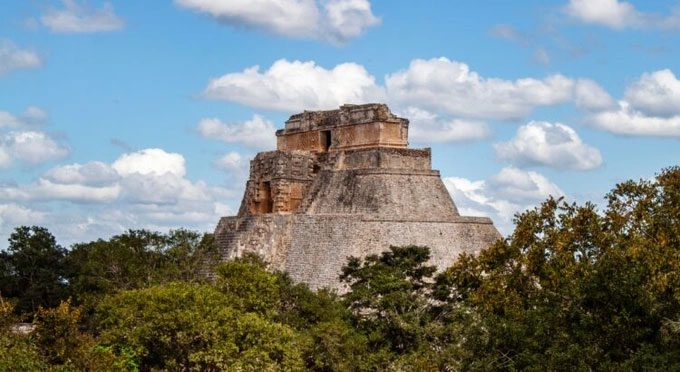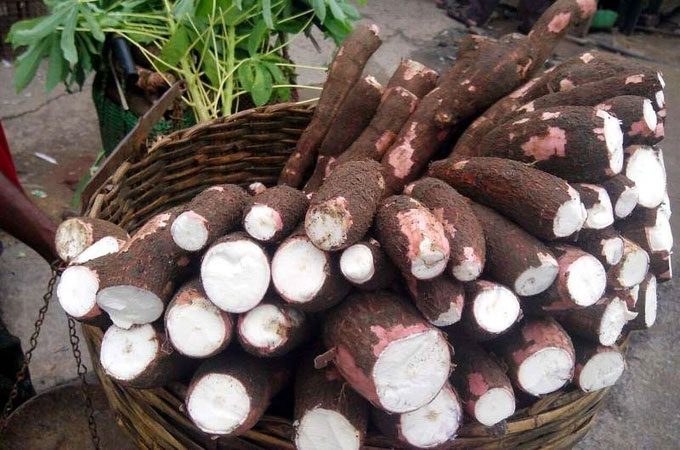The El Niño phenomenon currently occurring is likely to cause droughts in several regions around the world, and insights from the Maya civilization may be beneficial to humanity today.
A new study reveals that the Maya possessed a treasure trove of resources to survive in harsh climatic conditions.

Ruins of the ancient Maya city, representing Puuc architecture, Yucatán Peninsula, Mexico. (Photo: Science et vie).
This is one of the oldest civilizations in South America, with the Maya community thriving from 2,600 BC to 1520 AD.
The Maya civilization is renowned for its remarkable inventions in various fields, including architecture, writing, agriculture, particularly in mathematics and astronomy.
The cities of the Maya were densely populated and wealthy. However, they mysteriously began to disappear in the early 10th century. Some studies suggest that this event may have been caused by prolonged droughts that struck South America in the late 9th century, leading to famine.
Since many of the Maya’s crops were highly sensitive to drought, such as corn, beans, and squash, scientists have questioned how the Maya managed to survive such extensive droughts before they ultimately went extinct.
Diverse Food Sources
Researchers, archaeologists, anthropologists, and botanists have sought to demonstrate that the Maya did not solely rely on corn or beans for sustenance. Their agriculture produced over 500 types of edible plants, of which nearly 60 species were highly drought-resistant.

Cassava is one of the plants that helped the Maya survive during droughts. (Illustrative photo: Science et vie).
Plant physiologist Louis Santiago explains: “Even in cases of severe drought, they still had food sources to rely on.”
More than 83% of food plants were still cultivated by the Maya during short-term droughts. Additionally, most of these plants had edible roots, stems, leaves, and fruits.
This was sufficient to diversify the diets of the Maya, with cassava being one of many drought-resistant plants utilized as food by the ancient Maya.
The Maya civilization was distinguished by a wealth of scientific knowledge and skills that helped them address climate-related issues.
They excelled in astronomy, invented hieroglyphic writing, built grand pyramid temples, cleared vast tropical forests for agriculture, and explored trade routes from the heart of the jungle.
Researchers explain that we must differentiate between meteorological drought, which refers to the absence of rain, and agricultural drought, which concerns the availability of water for crops. Notably, in areas where fresh water was scarce, the Maya constructed massive underground rainwater reservoirs.
Food Reserves and Trade Diplomacy
Moreover, after establishing extensive trade relationships with distant peoples, the Maya could trade for crops from areas less affected by drought to ensure a stable food supply within their society.
The Maya were entirely capable of anticipating potential hardships by storing a portion of their agricultural output.
However, researchers find it peculiar that there is no evidence of large-scale food storage among the Maya, such as warehouses, while such structures have been found in some other ancient cultures.
Ethnobotanical studies of the Maya diet indicate that during periods of drought or food scarcity, the Maya utilized edible plants that thrived in the wild or were cultivated in the forest’s interior.
Thus, the forest represented a type of living plant storage area.
If food was scarce, the Maya would turn to the forest, using wild plants to sustain their society.
During short-term droughts, plants that extract water from groundwater, such as papayas, avocados, and plums, could still thrive, or the Maya would seek out herbaceous plants from the Amaranth family and other high-yield root crops like cassava and sweet potatoes for food.
In cases of severe drought lasting several years, food choices would be significantly restricted, but there would still be many kinds of plants available to provide energy for the Maya, including tree bark and cacti, which were rich in carbohydrates and even protein.
To meet their energy needs, the Maya would opt for a diversified diet.
Why the Maya abandoned their thriving cities remains a mystery.
The cause could have been an unidentified epidemic, bloody warfare, a natural disaster, a farmers’ uprising against the elite, or some religious or superstitious reason.
If we are impressed by something regarding the intellect of the Maya civilization, it may be their survival strategies during droughts, as global warming today is much more tangible than the apocalypse predicted in the Maya’s sacred calendar.
Currently, the world is facing climate change, and drought is undoubtedly going to occur in many regions globally. We can leverage the lessons from the Maya to survive prolonged droughts, albeit on a much larger scale.


















































